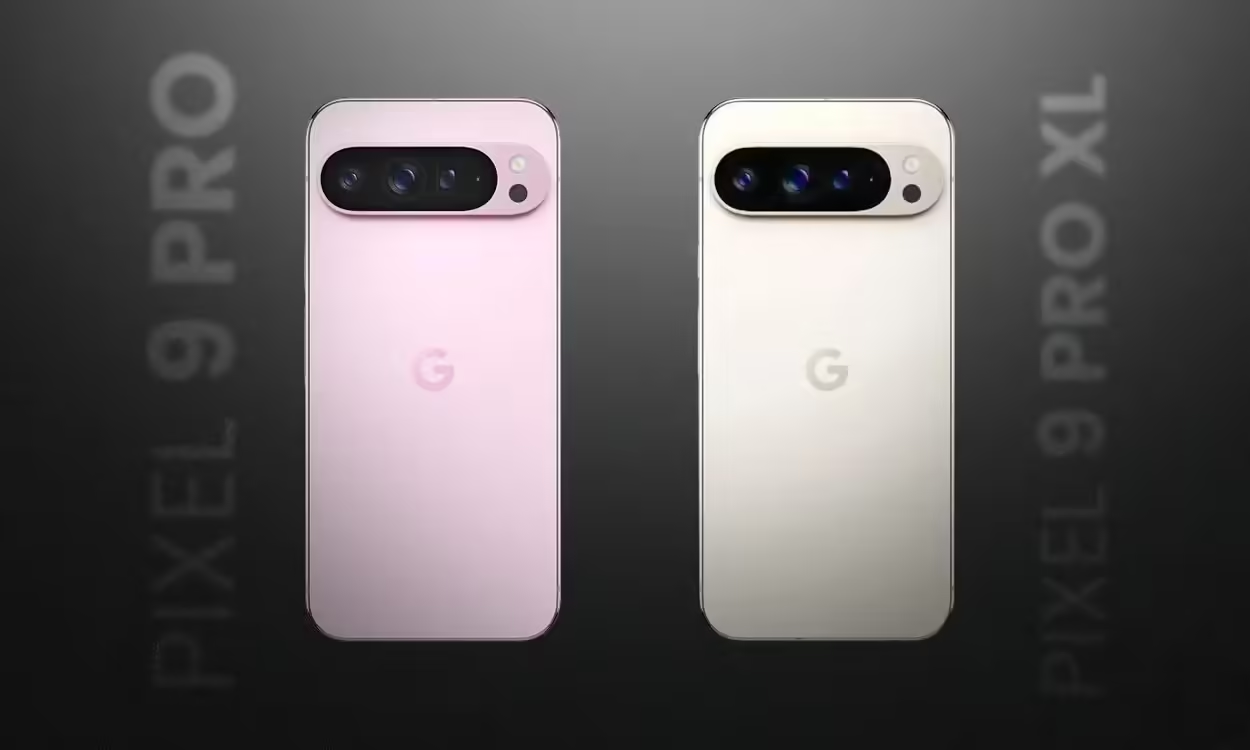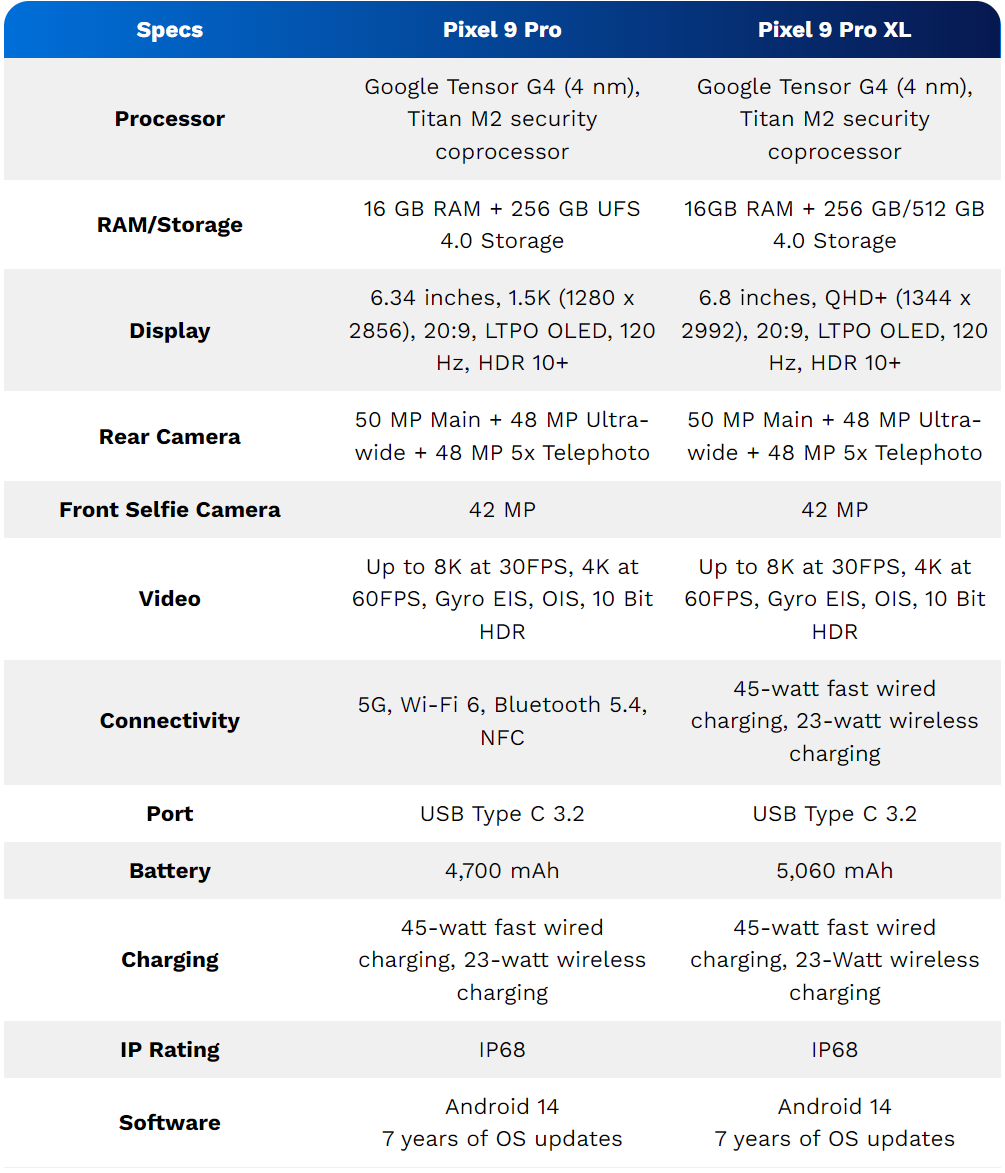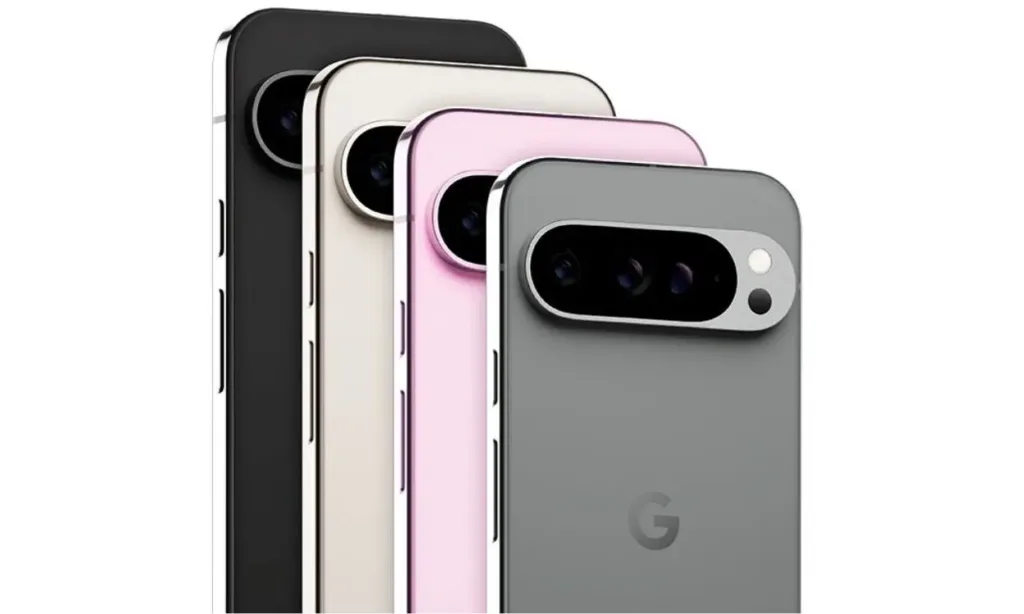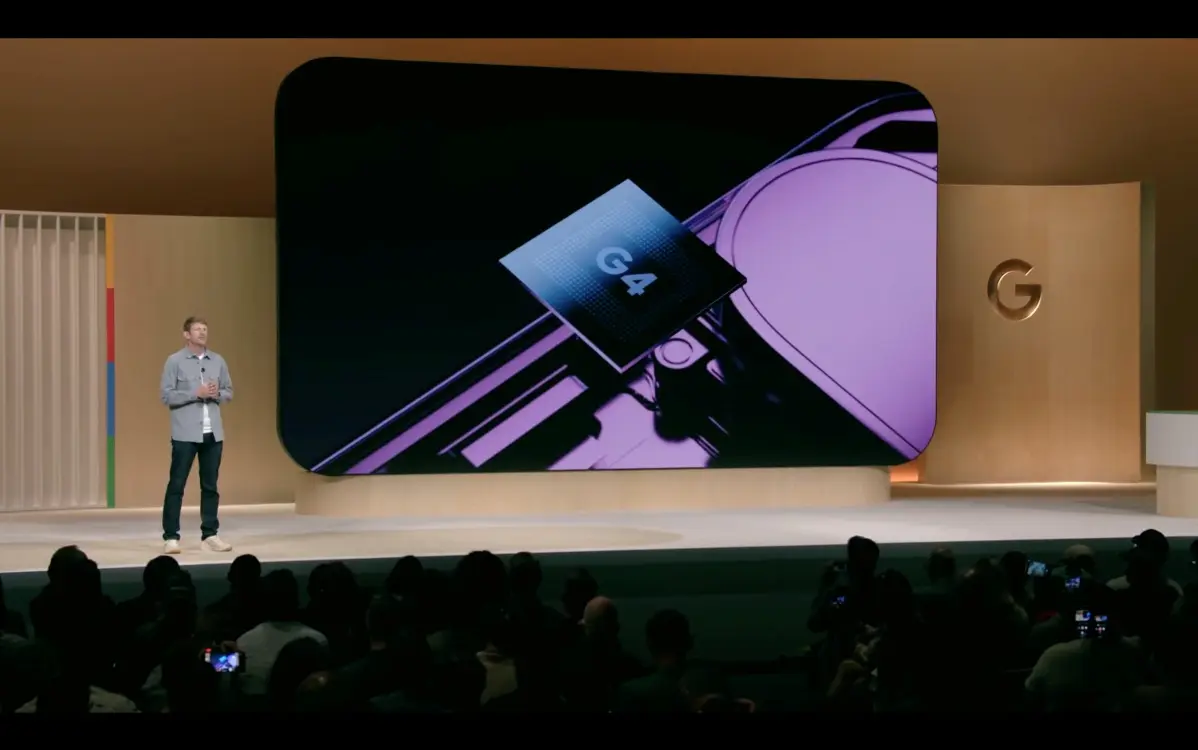
The Pixel 9 series represents Google’s most ambitious launch since the Pixel 6 series in 2021, introducing four new smartphones: the standard Pixel 9, two Pro models, and a foldable device. While we’ve already covered the base Pixel 9 and the foldable in previous posts, this comparison will delve into the specifications and differences between the Pixel 9 Pro and Pixel 9 Pro XL to help you decide which one is right for you.
Pixel 9 Pro vs Pixel 9 Pro XL: Specifications

Build and Design
The Pixel 9 series features a new design refresh with flat sides all around. For the Pixel 9 Pro and Pixel 9 Pro XL, this translates to glossy metal frames and a frosted glass back. The camera bump is now more compact, with prominent rounded edges that match the matte finish of the back.

Personally, I’m not a fan of this flat design trend, which began with the iPhone and has been adopted by the Galaxy S24 series this year. Although both models are 8.5mm thick, the flat edges can make them harder to handle compared to the Pixel 8 Pro, which, with its 8.8mm thickness and curved sides, felt more comfortable in the hand.

The Pixel 9 Pro and Pixel 9 Pro XL appear nearly identical, both featuring power and volume buttons on the right side, and a USB-C port, speaker, and SIM card tray at the bottom. The main difference between them is their size, with the Pixel 9 Pro XL being the larger of the two models though the name might have already hinted at that.
Display
The Pixel 9 Pro features a 6.3-inch display with a 1.5K resolution, while the Pixel 9 Pro XL boasts a larger 6.8-inch screen with a higher QHD+ resolution. Aside from the size and resolution, the displays are identical.

Both models feature an LTPO OLED display with a 120Hz refresh rate, HDR10+ support, and Corning Gorilla Glass Victus 2 for enhanced durability. The screens are framed by relatively thin, uniform bezels and include a center pinhole for the selfie camera.
Hardware and Battery

The new Pixel models are powered by the Tensor G4 processor, built on a 4-nanometer architecture. The processor features cores clocked at higher speeds and is organized in a more conventional 1+3+4 configuration. It also incorporates the Samsung Exynos Modem 5400, which supports satellite connectivity.
- 1x Cortex-X4 (3.1 GHz)
- 3x Cortex-A720 (2.6 GHz)
- 4x Cortex-A520 (1.95 GHz)
Both the Pixel 9 Pro and Pixel 9 Pro XL come with 16 GB of RAM. However, the Pixel 9 Pro offers only a 256 GB storage option, while the Pixel 9 Pro XL provides choices of either 256 GB or 512 GB.
The Pixel 9 Pro is equipped with a 4,700 mAh battery, while the Pro XL features a larger 5,060 mAh battery. Thanks to the more efficient chip, both devices are expected to provide 6–7 hours of usage. For charging, both models support 45-watt wired fast charging and 23-watt wireless charging.
Camera and Video
In the camera department, Google continues with the same 50 MP Samsung Isocell GN2 sensor used in the Pixel 8 Pro. This sensor features an f/1.68 aperture and a 1/1.31″ size with an 82-degree field of view, enabling it to capture impressive photos in various lighting conditions.

Both the Pixel 9 Pro and Pro XL include a 48 MP ultrawide lens with a 123-degree field of view and a 48 MP telephoto sensor with 5x zoom. All cameras are equipped with optical image stabilization (OIS) and can record video at up to 8K 30 FPS. Users can also choose between 4K 30/60 FPS, 1080p 30/60/120 FPS, or 240 FPS for slow-motion recording.
The Pixel 9 Pro and Pixel 9 Pro XL feature a 42 MP selfie camera, capable of recording 4K videos at both 30 and 60 FPS. This makes them appealing options for vloggers and video enthusiasts.
While the camera specifications are important, much of the image enhancement will rely on Google’s computational photography algorithms. Additionally, the thermal sensor from the Pixel 8 Pro has returned in both Pro models, adding another layer of functionality.
Pixel 9 Pro vs. Pixel 9 Pro XL: Which One Is Right for You?
The new Pro models are undoubtedly the most refined Pixels we’ve seen yet. They boast a striking, premium look while retaining the distinctive Pixel aesthetic. Although the Tensor G4 isn’t a massive leap from last year’s G3, the camera improvements are the most significant upgrade, reflecting Google’s emphasis on imaging quality.
The Pixel 9 Pro stands out as a compelling choice for those who prefer a powerful, compact phone in 2024, without sacrificing key features. For the first time in a while, you don’t need to opt for the larger model to get top-tier specs. However, if you’re accustomed to a larger form factor, the Pixel 9 Pro XL offers an unbeatable experience.


